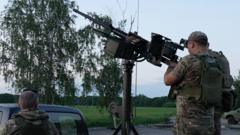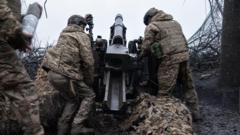European countries are set to nearly double their military spending in the next decade, with a commitment that may reach up to 14 trillion euros. However, concerns arise regarding whether this investment will translate into advancements in the European defense industry. The issue lies in the dominance of U.S. military technology, such as the F-35 stealth fighter and various advanced missile systems, which still lack dependable European alternatives. As nations weigh the benefits of developing a local military industry against the pressing need for immediate capabilities showcased by the ongoing conflict in Ukraine, the dilemma remains: pursue independence or rely on established U.S. defense firms.
Europe's Defense Dilemma: Investing in Military Independence or Leaning on U.S. Technology

Europe's Defense Dilemma: Investing in Military Independence or Leaning on U.S. Technology
European nations promise significant military investment, raising questions about local manufacturing capabilities.
European nations are adjusting their military strategies, committing to increased defense spending with hopes of bolstering their own industries over the next decade. As the amount could total as high as 14 trillion euros, the potential for innovation is significant, yet there’s an underlying concern—will the funds lead to meaningful advancements or merely further dependence on U.S. technology? Key systems, including the F-35 and advanced missile defense systems, highlight Europe's limited options. As the war in Ukraine continues, European nations face a critical choice: develop their military manufacturing capabilities or maintain their reliance on the established, high-tech defense solutions provided by American firms. This growing tension emphasizes the urgency for Europe to address its defense needs amidst the changing geopolitical landscape.




















